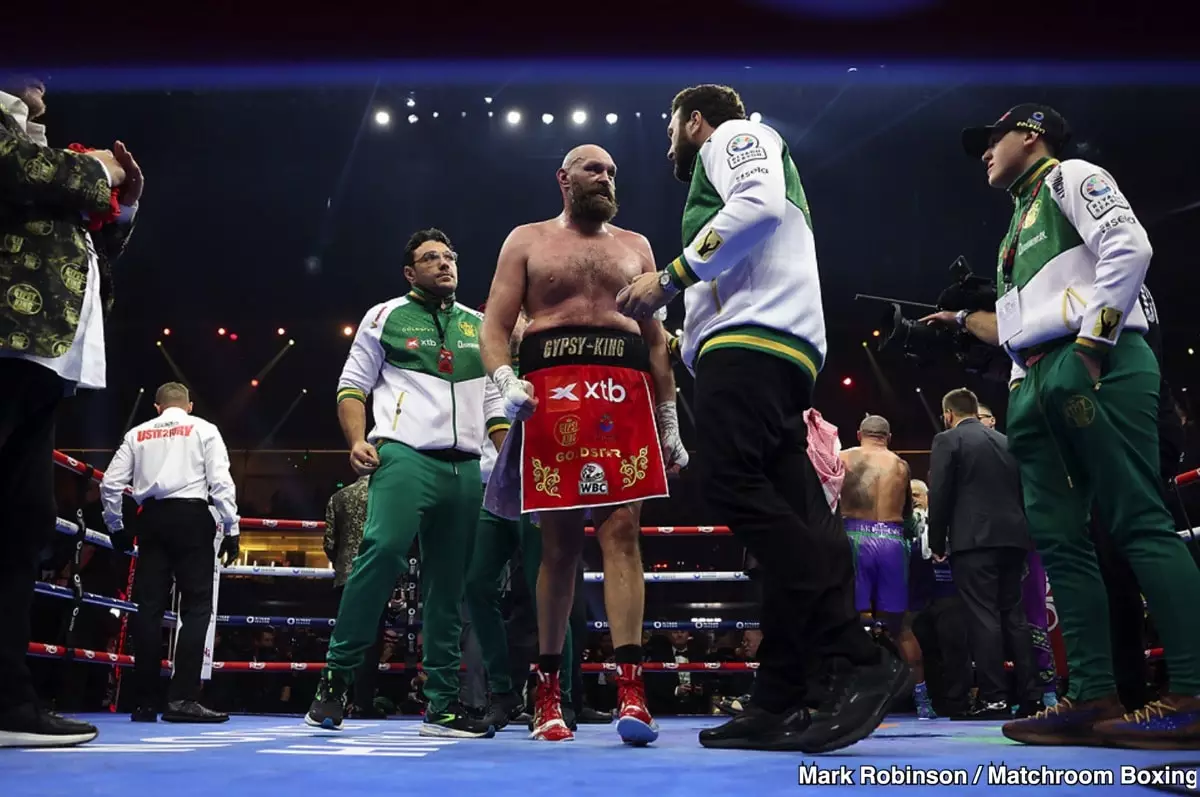In a much-anticipated rematch, Tyson Fury faced unified heavyweight champion Oleksandr Usyk on December 21st, and the results were far from what many had hoped for. Fury, who once dazzled the boxing world with his dynamic performance against Wladimir Klitschko in 2015, seemed unrecognizable in the ring, ultimately losing to Usyk by a unanimous decision with all three judges scoring the bout 116-112. This outcome was not merely a surprise—it raised serious questions about Fury’s abilities and strategy in the ring, especially considering that many spectators saw the fight as lopsided, with Usyk winning 10 of the 12 rounds.
For Tyson Fury, who boasts an impressive career record of 34 wins, 2 losses, and 1 draw, the rematch was the culmination of a pathway that exhibited distinct physical challenges. Observers noted that Fury seemed weighed down, both literally and metaphorically, entering the ring with additional mass that may have hindered his agility. His movements lacked the hallmark quickness and fluidity seen in his earlier bouts; they resembled those of a fighter significantly past prime, reminiscent of an older individual with debilitating ailments. This stark physical decline disrupts the narrative of Fury’s enduring prowess and raises alarms about his long-term viability in heavyweight boxing.
Fury’s approach in this rematch can be attributed to numerous tactical miscalculations. His intentions to leverage his size mimicked the strategy employed during his second fight against Deontay Wilder, where he successfully overpowered his opponent. However, the lightweight and quicker Usyk presented a different challenge altogether. Rather than absorbing Fury’s pressure, Usyk cleverly danced around him, utilizing effective angles to exploit Fury’s sluggishness. As the fight progressed, Fury’s attempts to brawl closer, characterized by clenching and aimless grappling, resulted in Usyk’s well-timed combinations as he separated. This stark reality exemplified that gaining weight didn’t equate to a superior fighting strategy against an opponent skilled in footwork and speed.
In the immediate aftermath of the fight, Fury and his camp displayed a troubling mix of denial and misplaced confidence in their performance. Tyson’s post-fight assertion that he believed he had won by a margin of three rounds indicates a disconnect that could result in dire consequences for his career trajectory. If a fighter is unable to accurately assess their position in the ring, it casts doubt on their ability to adapt and evolve their fighting style. Fury’s reluctance to commit to a knockout strategy in the championship rounds showcases a worrying complacency that diverged from the assertive, aggressive fighting style he once employed.
Fury’s trainer, SugarHill Steward, also found himself scrutinized amidst the fallout of the loss. The coaching direction appeared unable to galvanize Fury into adopting a more aggressive stance, particularly when the strategy needed recalibrating late in the fight. Steward’s failure to communicate the urgency of pursuing a knockout highlighted a broader theme: the necessity of a trainer who can adequately perceive the flow of a match and adjust tactics accordingly. With Fury at 36 and potentially nearing the end of his career, questions arise about the effectiveness of this partnership moving forward.
The aftermath of this bout presents a critical juncture in Tyson Fury’s career. Speculation abounds regarding his future, particularly if a demanding series against Anthony Joshua lies ahead. Should he find himself in retirement mode, this chapter may conclude the story of a once-dominant heavyweight who dazzled the world with remarkable displays of fighting prowess but faltered in the shadow of age and miscalculation. Whether this transformative experience serves as a lesson for Fury or a precursor to an uphill battle remains to be seen as the boxing community watches with bated breath. The landscape of heavyweight boxing continuously shifts, and Fury must adapt or risk fading into oblivion.


Leave a Reply